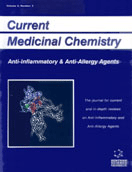Abstract
This review describes our current understanding of telomere length polymorphism and organization in breast cancer cells. The key roles of the telomeric DNA protein complexes as protectors of chromosomal ends in normal and cancer cells are under much attention in current research, and here we review some of these issues. In general the functionality of telomeres depends on a number of associated factors, like - (1) the length of the telomeric sequence at a particular chromosomal end, (2) the status of telomerase activity, (3) the telomere associated proteins, (4) the status of subtelomeric heterochromatinization, (5) or associated chromosomal instability. Specifically, in breast cancer, depending on the presence or absence of the mutations in DNA repair proteins the telomere function becomes much more fragile. Some recent studies using modern high performance three-dimensional (3D) imaging technologies indicate that many exciting aspects of this multifaceted telomere research are going to unfold further in the coming years.
Keywords: senescence, genomic integrity, genomic instability, telomeric crisis, telomeric fusions, neoplastic transformatio, breast cancer
 4
4

